fluent用LES算水翼边界层选择中心差分引起的震荡如何消除
-
抱歉,李老师,那我直接把LDV的数据贴上吧,谢谢老师!
0.51874 0.02 0.54523 0.04 0.57821 0.06 0.60027 0.08 0.61619 0.1 0.63168 0.12 0.65259 0.16 0.67519 0.2 0.69035 0.24 0.71312 0.28 0.72578 0.32 0.75144 0.38 0.76757 0.42 0.78385 0.46 0.79825 0.5 0.81624 0.54 0.83174 0.58 0.86305 0.66 0.89698 0.74 0.9205 0.82 0.94188 0.9 0.96355 0.98 0.98842 1.14 0.99863 1.3 1.00000 1.46 0.99797 1.62 0.99706 1.78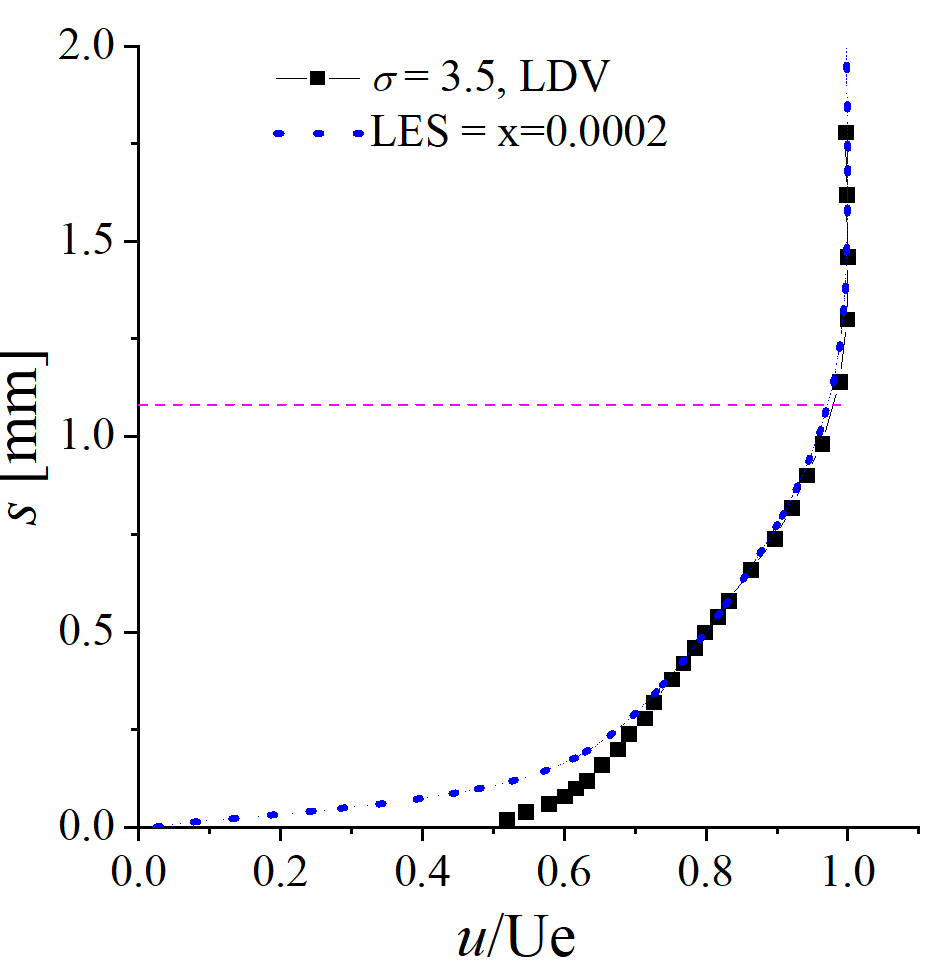
-
- is it time-averaged U predicted by LES?
- What is the maxima? the Umax in this line or in the computational domain?
Your results look quite good. Is it predicted by linear scheme? How about the other schemes, e.g., limited schemes?
I am runing LES simulation, but it is very slow. I try to limit Co under 0.6. Since the global Umax is around 10 m/s, it indicates $\Delta t = 2.6e-6$. What value is your global Umax?
Courant Number mean: 0.00518159 max: 0.59921 deltaT = 2.67779e-06 Time = 0.0168822 GAMG: Solving for p, Initial residual = 0.0474207, Final residual = 0.00156874, No Iterations 2 time step continuity errors : sum local = 3.90116e-10, global = -6.12223e-14, cumulative = 5.73243e-11 DICPCG: Solving for p, Initial residual = 0.0105353, Final residual = 9.99036e-07, No Iterations 608 time step continuity errors : sum local = 2.48515e-13, global = -3.59741e-15, cumulative = 5.73207e-11 ExecutionTime = 401.48 s ClockTime = 421 s fieldMinMax minMaxp write: min/max(mag(U)) = 0 10.5464 Courant Number mean: 0.0051816 max: 0.601813 deltaT = 2.61829e-06 Time = 0.0168848 GAMG: Solving for p, Initial residual = 0.0479045, Final residual = 0.00156265, No Iterations 2 time step continuity errors : sum local = 3.72593e-10, global = 2.37179e-14, cumulative = 5.73444e-11 DICPCG: Solving for p, Initial residual = 0.0102726, Final residual = 9.97099e-07, No Iterations 152 time step continuity errors : sum local = 2.38352e-13, global = 2.12724e-14, cumulative = 5.73657e-11 ExecutionTime = 402.54 s ClockTime = 423 s -
I did a rough calculation, my time step is 3.3e-6, Co = 0.6, my server takes 2 s to calculate one time step. If I want to calculate 0.5 s, it takes me $0.5/(3.3e-6)*2/3600/24=2.5$ days to run, which looks too long for me.
Another point we need to discuss is that, if Umax is 11 m/s, to ensure Co < 1, you should use similar time step like mine.
试了从1e-5到5e-5
No matter 1e-5 or 5e-5, the Co is larger than 1. Unless time step is smaller than 5e-6, Co is smaller than 1.
Meanwhile, I heard that commercial software can employ much larger Co number. Since the code is not public to the users, I dont understand why.
-
-
Yes. My OpenFOAM results show that oscillation occurs if linear scheme is used. Although this can be explained by theory, you know that. You can try other schemes like
superbeewhich is quite sharp to verify if it predicts better results.Now, I terminate my calculation.
-
Below is the plot predicted by steadyState solver
simpleFoam. 10 mins is enough if you have 60/80 cores. You can see that it can be improved. I am not sure if LES can predict better results. Here is the test case, feel free to adjust the settings to see if you can obtain better results. Please also keep me updated. This is an excellent test case to investigate.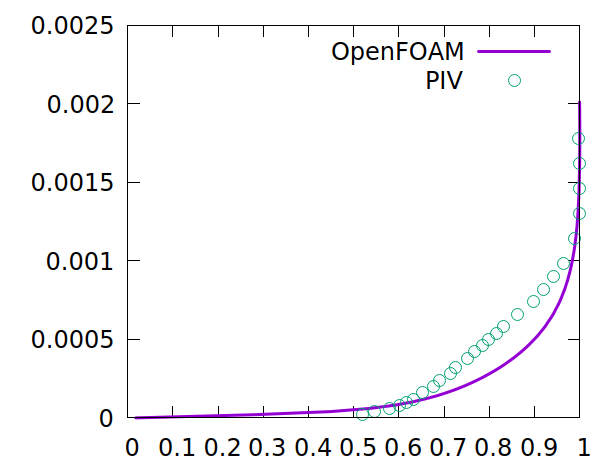

-
@李东岳 十分感谢李老师!对OPENfoam不太熟,抱歉耽误了这么长时间回复您,现在使用了三种差分格式 1. filteredlinear 过滤系数取0.5 2. filteredlinear 过滤系数取1 3. LUST格式,25%迎风+75%中心
1.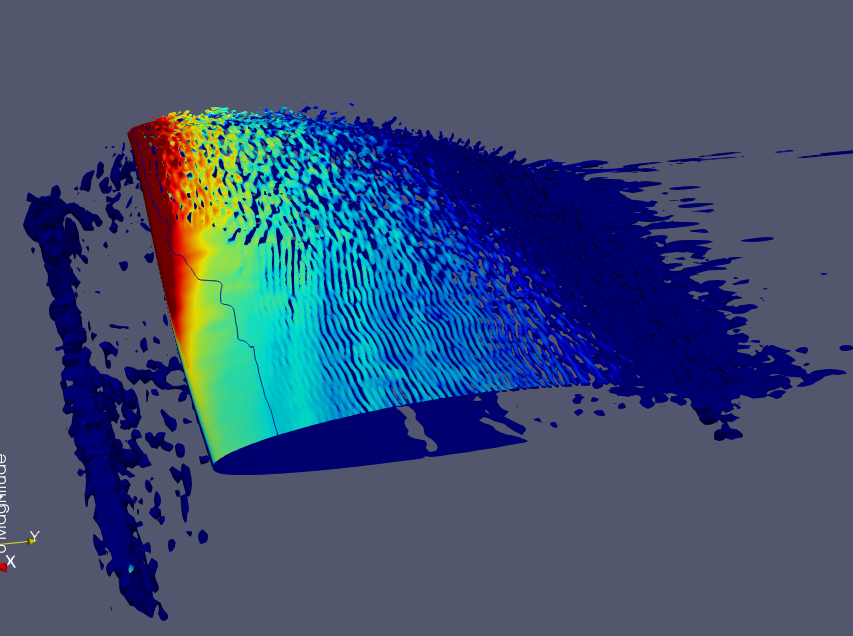
2.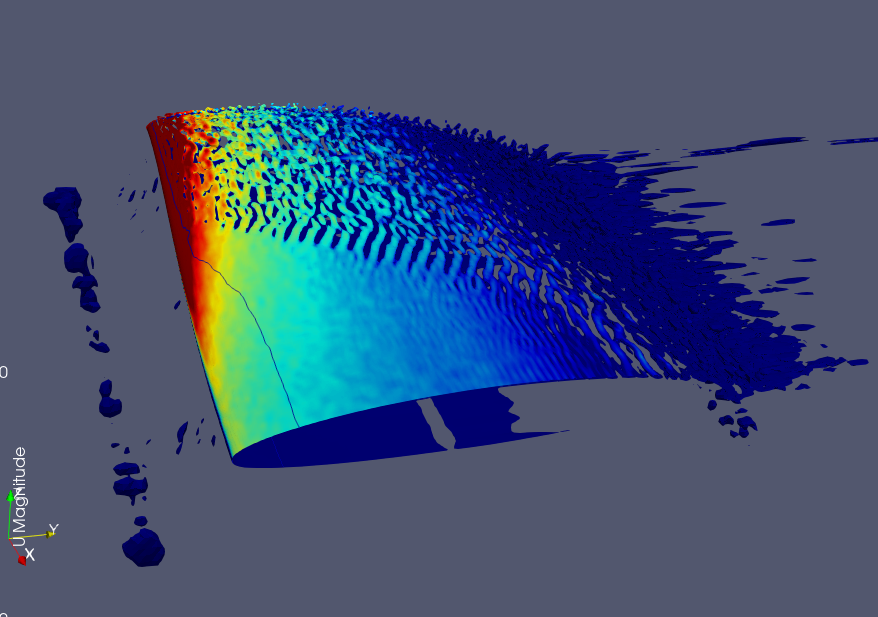
3.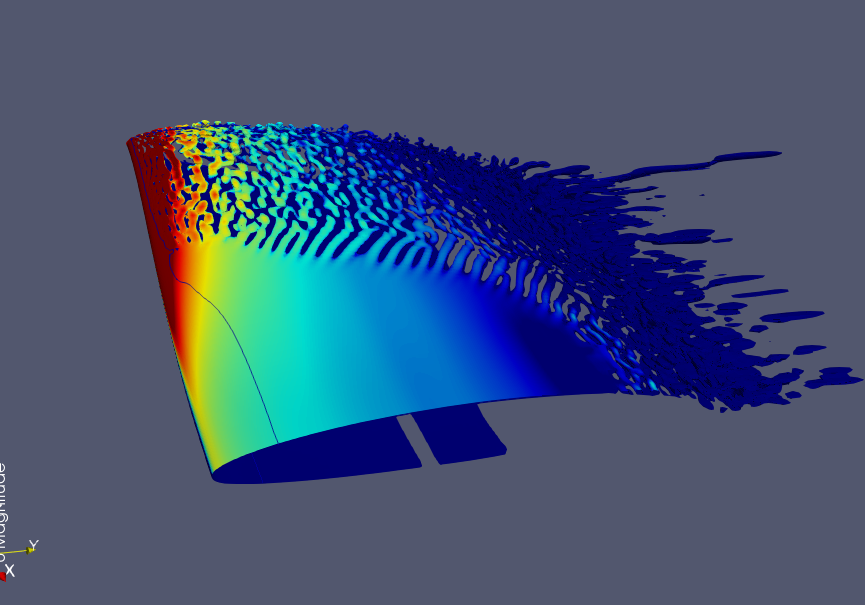
速度场wiggle
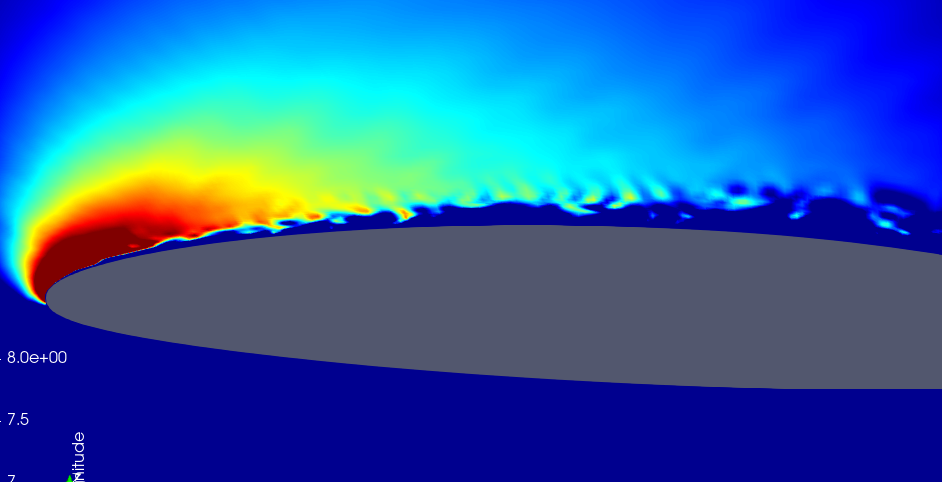
可以看到中心差分随着过滤强度从0.5-1,耗散性会变大,导致靠近边壁的涡结构被抹平,逐渐向迎风格式的结果过渡,但是都不能解决震荡问题,(过滤掉了一些高频的震荡(碎涡),但是速度场的wiggle依然存在)。LUST格式下没有震荡,虽然只有25%的迎风,但仍然会造成边界层计算不准确,速度梯度不对,结果和二阶迎风类似。目前我认为应该是这个高雷诺数问题(5e5)本身无法用千万量级的网格算边界层,网格雷诺数太高,(我看有人说cell Re <2才能稳定),中心差分耗散太小,导致震荡难以消除。现在准备暂时放弃边界层定量研究了。。。


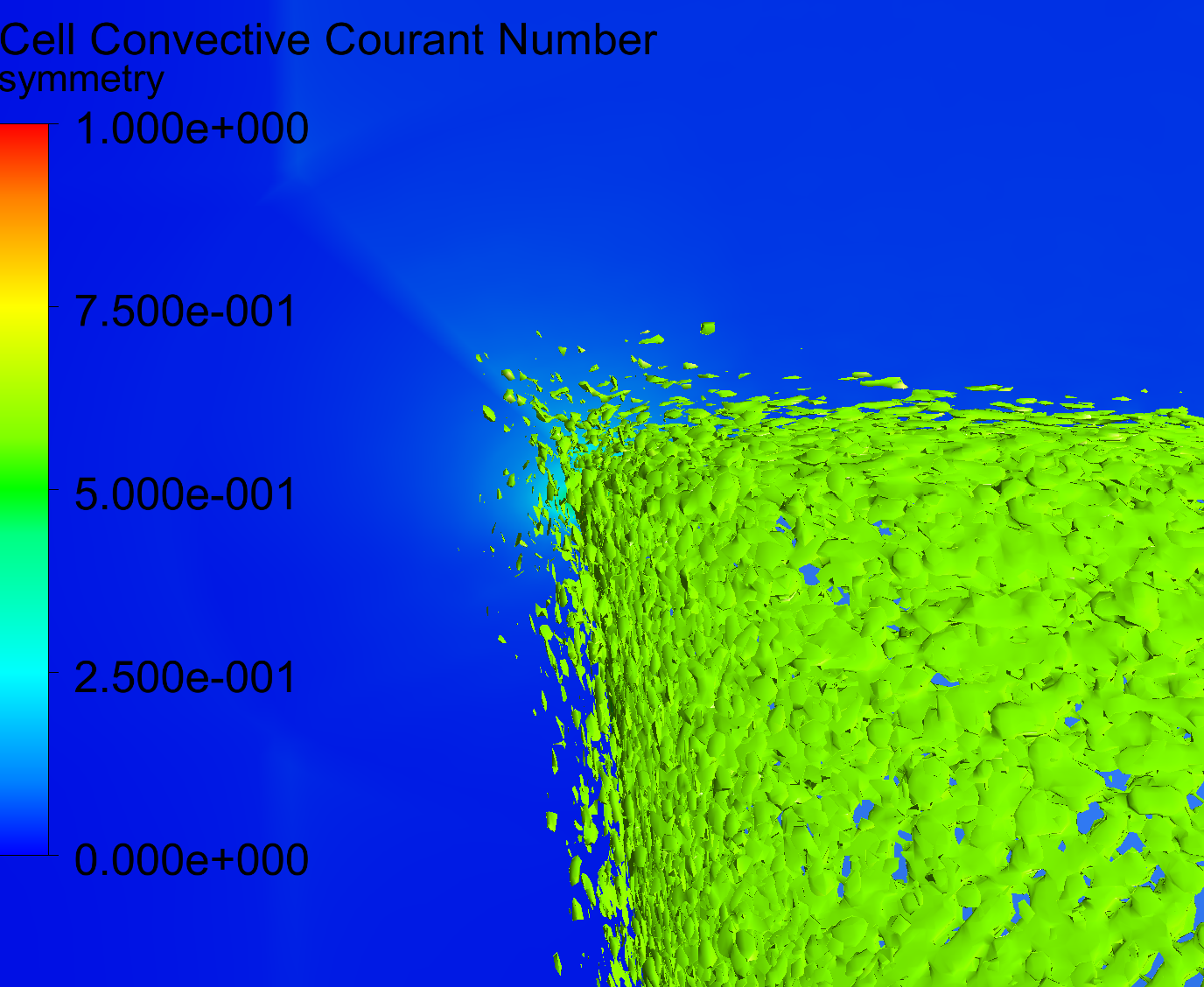

 感兴趣的可以搞搞
感兴趣的可以搞搞
